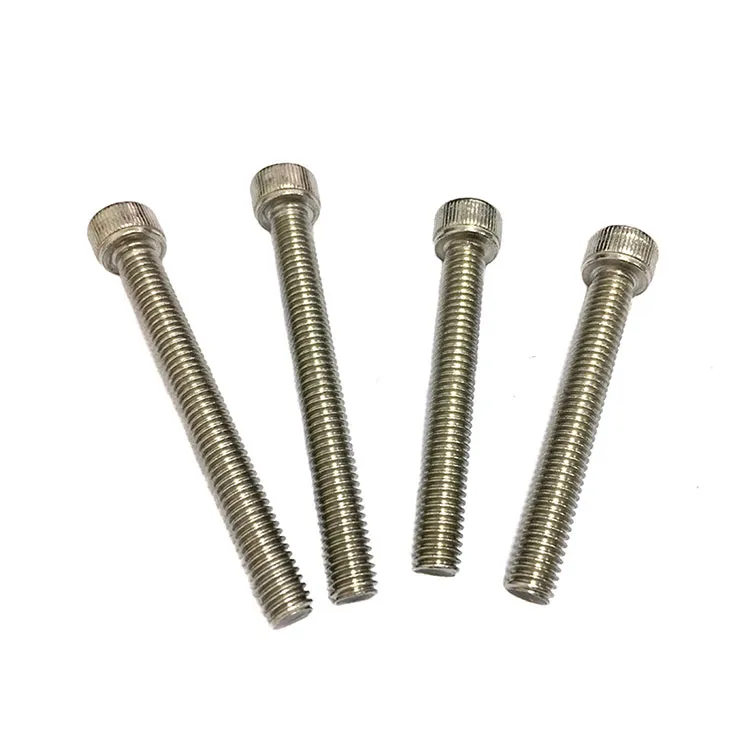What is the effect of heat treatment on improving the fatigue strength of bolts?
2024-09-10
The fatigue strength of bolts has always been an issue of concern. Data show that most of the failure of bolts is caused by fatigue damage, and there is almost no sign of fatigue damage, so major accidents can easily occur when fatigue damage occurs. Heat treatment can optimize the performance of fastener materials and improve their fatigue strength. In view of the increasingly high use requirements of high-strength bolts, it is even more important to improve the fatigue strength of bolt materials through heat treatment.

The effect of heat treatment on improving the fatigue strength of bolts.
The initiation of fatigue cracks in materials.
The place where fatigue cracks first start is called the fatigue source. The fatigue source is very sensitive to the microstructure of the bolt and can initiate fatigue cracks at a very small scale, generally within 3 to 5 grain sizes. The surface quality problem of the bolt is the main fatigue source, and most fatigue starts from the surface or subsurface of the bolt. A large number of dislocations and some alloy elements or impurities in the crystal of the bolt material, as well as differences in grain boundary strength, are all factors that may lead to the initiation of fatigue cracks. Studies have shown that fatigue cracks are prone to occur at the following locations: grain boundaries, surface inclusions or second-phase particles, and voids. These locations are all related to the complex and changeable microstructure of the material. If the microstructure can be improved after heat treatment, the fatigue strength of the bolt material can be improved to a certain extent.
Effect of decarburization on fatigue strength.
Decarburization on the bolt surface will reduce the surface hardness and wear resistance of the bolt after quenching, and significantly reduce the fatigue strength of the bolt. The GB/T3098.1 standard contains a decarburization test for bolt performance and specifies the maximum decarburization layer depth. A large amount of literature shows that due to improper heat treatment, the bolt surface is decarburized and the surface quality is reduced, thereby reducing its fatigue strength. When analyzing the cause of the fracture failure of the high-strength bolt of the 42CrMoA wind turbine, it was found that the decarburization layer existed at the junction of the head and rod. Fe3C can react with O2, H2O, and H2 at high temperatures, resulting in a reduction of Fe3C inside the bolt material, thereby increasing the ferrite phase of the bolt material, reducing the strength of the bolt material, and easily causing microcracks. Controlling the heating temperature during the heat treatment process and adopting controlled atmosphere protection heating can solve this problem well.
Effect of heat treatment on fatigue strength.
When analyzing the fatigue strength of bolts, it was found that improving the static load bearing capacity of bolts can be achieved by increasing hardness, while improving fatigue strength cannot be achieved by increasing hardness. Because the notch stress of bolts will cause greater stress concentration, increasing the hardness of samples without stress concentration can improve their fatigue strength.
Hardness is an indicator of the hardness of metal materials, and is the ability of materials to resist the pressure of harder objects than it. The hardness also reflects the strength and plasticity of metal materials. Stress concentration on the surface of bolts will reduce its surface strength. When subjected to alternating dynamic loads, micro-deformation and recovery processes will continue to occur at the notch stress concentration site, and the stress it is subjected to is much greater than that at the site without stress concentration, which can easily lead to fatigue cracks.
Fasteners improve their microstructure through heat treatment and tempering, and have excellent comprehensive mechanical properties. They can improve the fatigue strength of bolt materials, reasonably control the grain size to ensure low-temperature impact work, and also obtain higher impact toughness. Reasonable heat treatment can refine grains and shorten the distance between grain boundaries to prevent fatigue cracks. If there are a certain amount of whiskers or second-phase particles inside the material, these added phases can prevent the slip of the retained slip band to a certain extent, thereby preventing the initiation and expansion of microcracks.
Conclusion
Fatigue cracks always initiate at the weakest link in the material. Bolts are prone to cracks due to surface or sub-surface defects. Retained slip bands, grain boundaries, surface inclusions or second-phase particles, and voids are prone to occur inside the material because these locations are prone to stress concentration.
Heat treatment has a great influence on the fatigue strength of bolt materials. During the heat treatment process, the heat treatment process should be specifically determined according to the bolt performance. The initial fatigue crack is caused by stress concentration caused by microscopic structural defects of the bolt material. Heat treatment is a method to optimize the fastener structure, which can improve the fatigue performance of the bolt material to a certain extent and increase the life of the product. In the long run, it can save resources and conform to the sustainable development strategy


